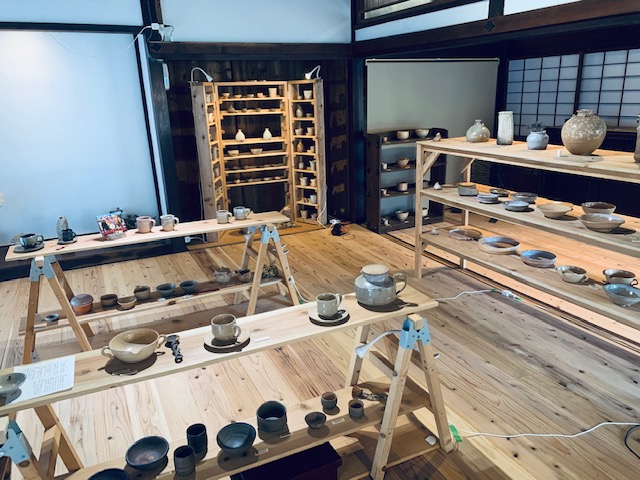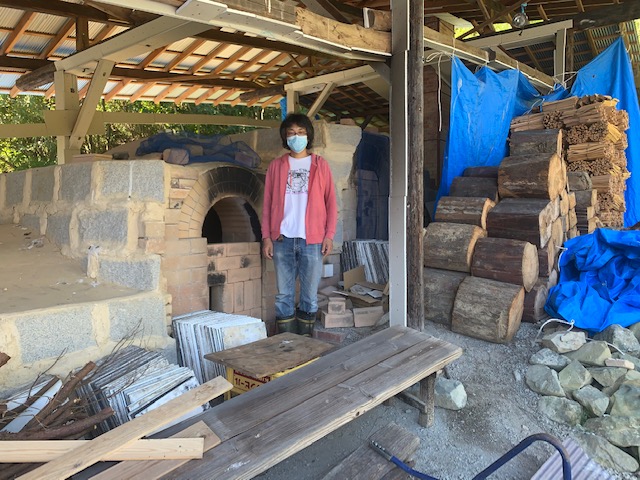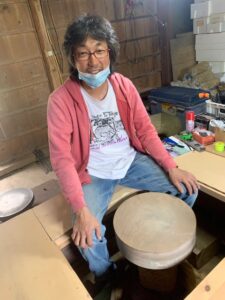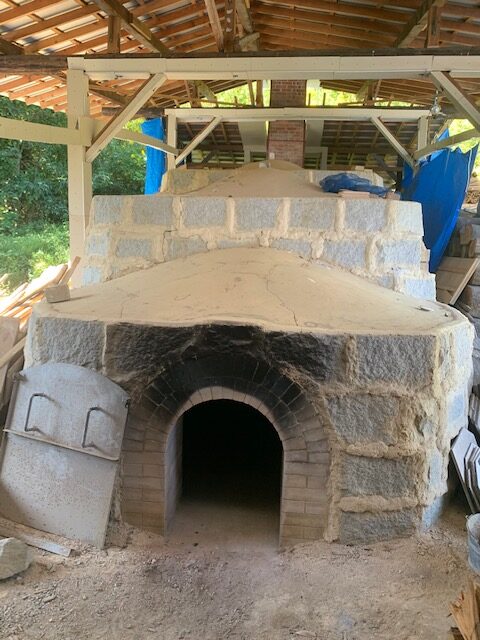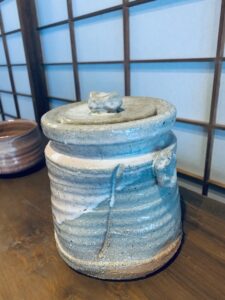This series of extracts are spiritually related material culled from a longer account of travelling the length of Japan, from Wakkanai in the far north to Ibusuki in south Kyushu. The journey took three months in all, and one of the highlights was my discovery of the charms of Hagi, famous for its pottery. In this case, spirituality is linked with Japan’s dedication to craftsmanship.
**********************
‘The first time I took an interest was in Paris, when my cafe au lait was served in a handmade mug. I thought, that’s artistic, that’s attractive. It made the coffee taste special.’
Masanori was talking, a forty-eight year old potter with an unusual life story. Unlike the hereditary lineages whose families have been potters for centuries, he was a vocational potter who had to struggle to survive. After university he took a job as a documentary cameraman, but there was a yearning for something different. One day he woke up and knew with absolute certainty he was going to be a potter. He was twenty-seven, an age at which in Japan’s unforgiving career structure a person’s fate is often sealed. But for Masanori there was not the slightest doubt.
‘Pottery raises the human spirit. It is not just something for use, not just an object. It is organic, with its own character, and feel, and history. Once I sensed that, I couldn’t forget it.’
The light in his eyes showed that he still resonated with a youthful passion. It had moved him to drop his job and get apprenticed to Saka Kouraizaemon, a 12th generation potter whose family were descended from a Korean immigrant in the early seventeenth century. As in Zen and the tea ceremony, lineages matter.
The hereditary principle in Japan means more than just blood and DNA; it means being steeped from birth in the family business. It remains an important element in Shinto. You can see it most clearly in kabuki, where child-heirs appear on stage not long after they have learnt to walk. The principle is so rooted in the artistic and religious worlds that it survived the imposition of democracy after World War Two and continues to be widely accepted today. The emperor system is the supreme example.
As an outsider, Masanori had to start from scratch, meaning a low salary and menial jobs like packing or preparing clay. When his master died after just four years, he survived on low wages by working for a pottery company, all the while aiming to be independent – tough when Hagi alone has over 100 potters competing for a limited market.
‘How did you go about setting up on your own?’ I asked.
‘At first I rented a climbing kiln, which I worked on in my spare time, but there was a problem with firing it so I decided to make my own. It took a long time to find suitable land, and luckily there was an old house nearby in bad condition which we renovated.’
‘It looks good,’ I said, looking around at the renovated walls and neatly arranged shelves.
‘Thank you. It took a lot of time.’
‘How about the pottery?’
‘Well, I decided something crazy. I decided to make a traditional kiln. It is very difficult and took two years. That’s why no one does that any more. People called me “crazy potter”!’
Many modern kilns are automatically fired, using electricity. The traditional kiln, fired by wood, is not only less controllable, but needs more time and money to set up. By some estimates there are only around fifty in Japan. Though Masanori was told his idea was impractical, it simply made him more determined. Fortunately there was one person who supported him, emotionally and practically – Izumi, his devoted wife.
To make his kiln, Masanori needed a suitable piece of land, which was no easy task because of safety standards. It took a while, but eventually he found somewhere. Then the hard work began. First he cut down trees and cleared the vegetation. A professional was hired to do the levelling of the ground, and a professional carpenter constructed the roof. The climbing kiln was built with the help of a specialist team of three from Kyushu, possibly the last of their type, following which Masanori did the chimney and extended the roof on his own.
There had been several setbacks, but finally the big day arrived when the kiln was fired for the first time. It was a success. It lasted twenty-eight hours, during which he had no sleep because of the constant need to add wood (roughly every fifteen minutes). The result was the production of 1000 pieces. At the age of forty-seven Masanori’s dream had come true. It must have been a great feeling? ‘Yes,’ he said with a big smile. ‘It took a long time.’
Contrary to the popular image, shaping clay at the wheel is but a fraction of a potter’s work. It takes three minutes to shape a vessel; it takes months to prepare for a firing. Apart from the mixing of clay and preparation for the glaze, the traditional kiln necessitates masses and masses of wood. Where did it all come from?
‘Old houses and wood from timber merchants,’ he told me.
‘Why were you so determined to have a traditional kiln?’
‘Because the pottery is true,’ Masanori said. ‘It has more character, more colour and texture. Modern kilns are too controlled, so pieces look similar.’
‘What do you think makes Hagi pottery different from other styles?’
‘It is soft texture, plain, because it is fired at a lower temperature. The earth here makes it a reddish orange. It was made for the tea ceremony, for special occasions.’
‘And the glaze?’
‘Transparent, white. To show the colour of the clay. The white is from burnt rice straw. Sometimes it has a purple tint. Heat, amount of oxygen, position in the kiln, all can change the colour.’
‘Your pottery looks very traditional. Was that your intention?’
‘Yes, it’s strange. I am from outside but I try to keep Hagi tradition. But potters from Hagi, especially young ones, they want something new. For example, they sometimes add painting.’
Masanori and Izumi now run their own business, called Makino Hagiyaki Studio, which emphasises the product’s rootedness in Hagi. Masanori digs part of the clay himself, and the wood is sourced locally. He may not have been born here, but the pottery is Hagi through and through. ‘We believe that there exists an ethereal beauty in the traditional and simple Hagi pottery,’ states the Makino website.
Izumi offers me some green tea in one of her husband’s cups and tells me that because of the soft texture the liquid seeps into the cracks of the glaze. With the passage of time it affects the colour, and tea masters appreciate the nanabake (seven levels of change) acquired over long years of use. In this way the consumer shares in the creation. ‘When you drink, you too are adding to the colour,’ Izumi said, and the tea took on an extra tang.
The hours with Masanori and his wife had been edifying and transformed my view of pottery. I saw it now as a quest for perfection, as much a spiritual pursuit as a craft. As I looked at the cup I was drinking from, I thought of all the dedication and personal investment that had gone into it. ’Follow your bliss,’ said Joseph Campbell. It felt a privilege to meet someone who so thoroughly had.
